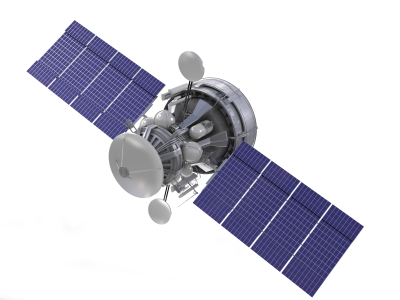Satellite Connectivity Comes of Age
By: Jesse Cryderman

Like everything else in the realm of telecommunications, satellite technology has undergone a profound metamorphosis since its inception.
On July 10, 1962, the first telecommunications satellite, Telstar, was launched from Cape Canaveral; developed by AT&T and Bell Labs, it resembled a disco ball. Thirteen days later the first transatlantic broadcast in history—video of the Statue of Liberty—was viewed by millions of Europeans. Telstar, which earned the distinction of initiating the first commercial use of outer space, also introduced Europe to baseball that day with a live broadcast of a Chicago Cubs-Philadelphia Phillies game at Wrigley Field. The transmission window was a mere 20 minutes, but nevertheless, the satellite age of communications had begun.
In the 1980s the coolest families in rural townships had giant satellite dishes that beamed premium video content into their living rooms. Never mind the fact that these folks had sacrificed their backyards to a swimming-pool-sized sky eye—they were getting TV straight from the stars. A decade later, PrimeStar, DirecTV and then Dish Network brought affordable satellite TV to the masses with smaller dishes and better quality of experience (QoE).
Just as mobile-phone technology that once required a car battery and a backpack to truly be “mobile” can now fit on a watch, satellite technology has also undergone extensive miniaturization and can now provide much more than cable TV. Advances in Ka-band spectrum utilization, energy efficiency, signal optimization, compression technologies, satellite clustering, and nearer-to-earth orbiting have culminated in a global satellite network that’s robust and economical enough to function as 4G cellular backhaul.It’s time to free satellite from the misconceptions of the past —namely, that it's slow, expensive and suffers from high latency. Although there’s still room for improvement, the satellite networks of today can be leveraged for improved coverage, backhaul, disaster recovery, and new-service delivery.
Satellite-based 4G backhaul a reality
Generally speaking, capacity on legacy geosynchronous satellite networks reinforces those misconceptions of the past: it really is expensive, the speeds aren’t that good and latency is significant. But what if we could bring satellites closer to the earth’s surface?
In late June the satellite-based service provider O3b launched four medium Earth orbit (MEO) satellites. The company, which is partly funded by Google, says on its website that it “can offer broad coverage, high capacity and low latency at a lower cost than fiber for broad rural coverage areas.”
Even more impressive is O3b’s claim that this new satellite technology is robust enough to support 2G, 3G and 4G LTE mobile backhaul. As Pipeline reported in its July issue, Maju Nusa agreed to provide O3bCell service to rural Malaysia, with the Southeast Asian telco’s managing director, Shahruddin Salehuddin, explaining in an official announcement the impact that O3bCell would have on residents, not to mention his company’s business. “Utilizing the O3b network, Maju Nusa will be able to deliver 3G service to customers over satellite [starting in] 2014,” he said. “For many, this will mean that they will go from zero connectivity to 3G for cellular services practically overnight.”
Salehuddin added, “Interactive services are not available today in these areas. Indeed, at present people commonly need to travel out of their village simply to make a phone call. As well as helping us improve our service, O3b helps to reduce CAPEX [capital expenditure] costs, aggregating our existing 111 sites over Peninsular Malaysia into only 20 customer-terminal locations.”




















